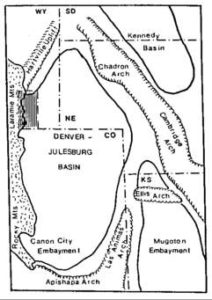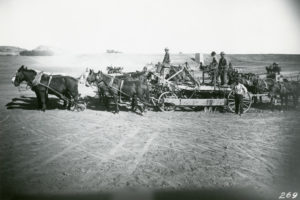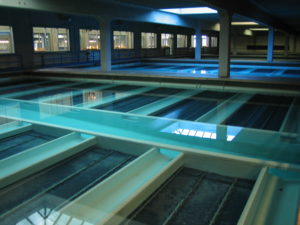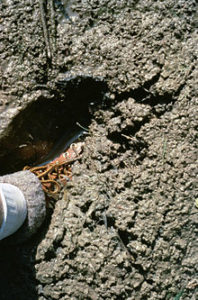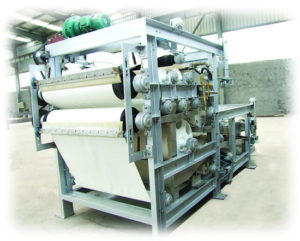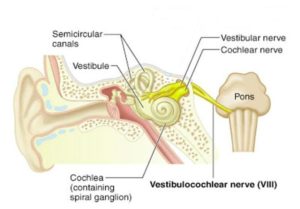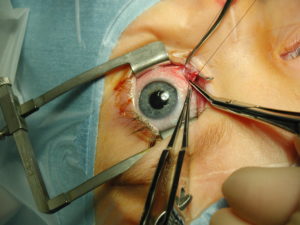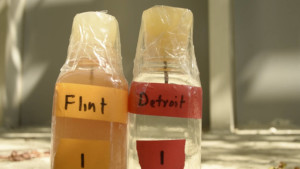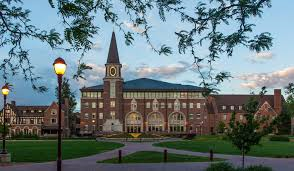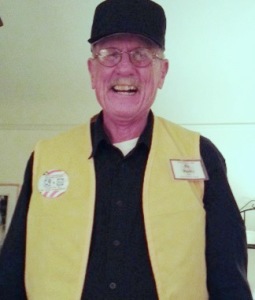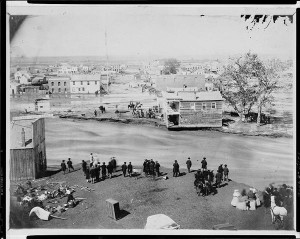Denver Basin
The Denver Basin is a deep syncline just east of the Southern Rocky Mountains. It started around 300 million years ago when the Ancestral Rocky Mountains were uplifted. A little plate tectonics here, folks. A tectonic plate is a huge plate of rock slowly moving on the earth’s mantle at or near the surface. When two tectonic plates collide, one of them often dives beneath the other. As the plate subsides, it runs into hotter rocks at depth. The subsiding plate has lots of water which lowers the melting point of the rock. Then things really go on the move.
The subsidence zone, usually along a coastline, gets pretty active, meaning earthquakes, volcanos, and the intrusion of huge blobs of granite known as plutons. New rock coming in from below means the overlying rocks get uplifted into mountain ranges. The other side of this mountain building is known as the foreland and usually subsides as its mass goes into the new mountains. As it subsides, the new basin fills with debris eroding from the mountains.
The Flatirons, Dakota Ridge, the Garden of the Gods, all are built from rocks buried thousands of feet deep just a few miles from the outcrops. I am sitting here writing atop thousands of feet of mountain debris.
 The mountains eventually get hauled away in rivers or dumped into the basin. This happened twice here in my home country. The second event occurred at the end of the Cretaceous and the early Paleogene, about 60 million years ago. Our current Rockies came up, known as the Laramide Orogeny, came up again, and the foreland deepened even more. It ended up being about 13000 feet deep, filled with the stuff washed and blown off the mountains.
The mountains eventually get hauled away in rivers or dumped into the basin. This happened twice here in my home country. The second event occurred at the end of the Cretaceous and the early Paleogene, about 60 million years ago. Our current Rockies came up, known as the Laramide Orogeny, came up again, and the foreland deepened even more. It ended up being about 13000 feet deep, filled with the stuff washed and blown off the mountains.
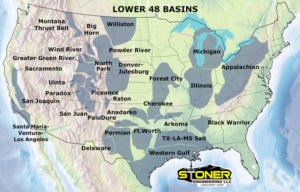 This all took a while. Rivers formed, seas came and went, and lots of life contributed organic material to the basin. The result? Coal, oil, and gas. The first oil well was in Boulder County, producing from fractured Pierre Shale, which was deposited by an inland sea. Now this Basin is big, extending into Nebraska and Wyoming. Huge amounts of oil and gas have been produced, and horizontal drilling and fracking are releasing even more. The Denver Basin is an oil patch.
This all took a while. Rivers formed, seas came and went, and lots of life contributed organic material to the basin. The result? Coal, oil, and gas. The first oil well was in Boulder County, producing from fractured Pierre Shale, which was deposited by an inland sea. Now this Basin is big, extending into Nebraska and Wyoming. Huge amounts of oil and gas have been produced, and horizontal drilling and fracking are releasing even more. The Denver Basin is an oil patch.
Water from the mountains also entered the basin, creating aquifers producing lots of water. We pump the water and because it is in an enclosed basin, it doesn’t recharge as fast as it is pumped. Douglas County is going to run out of groundwater some day. Then the water will have to come from the rivers, and the supply is limited. Thus, seemingly crazy proposals to pump water from Flaming Gorge Reservoir on the Green River in northern Utah to Eastern Colorado. Problem: California and Arizona also want that water.
Climate change has the potential of reducing the available water as well, eventually ending population growth. Amazon, Stay Away. Mining started Colorado development, and today the money still comes from the ground, but is from oil and gas. As we transition to alternate energy sources, where is Colorado’s wealth going to come from?
